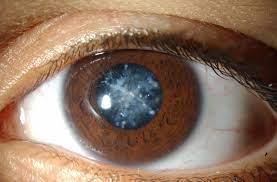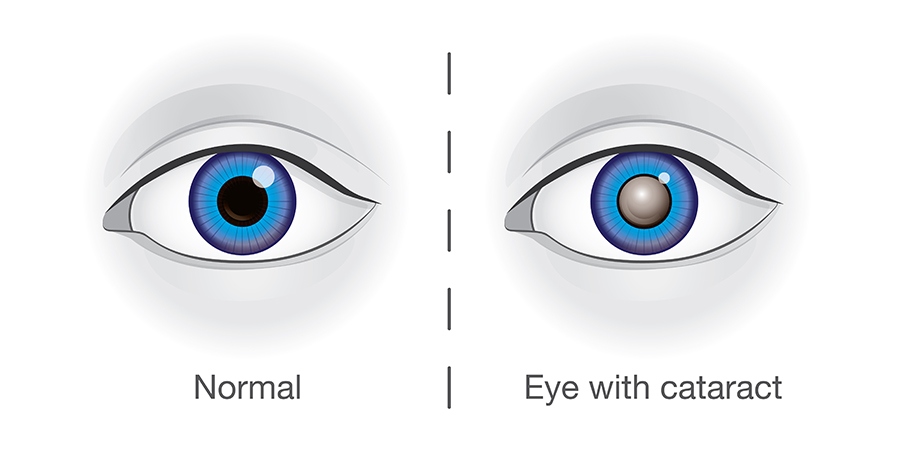Have you ever been told that you have a cataract in your left eye? Are you wondering what it means, and what treatments are available to address it? In this article, we’ll discuss the causes of cataracts, and the steps involved in successful left-eye cataract surgery. Read on to learn all the facts you need to know about this common condition and its potential treatments.
Contents
What Is Left Eye Cataract?

A cataract is a clouding of the eye’s lens. The natural lens of the eye helps to focus light and images onto the retina, which is the sensitive layer of tissue at the back of the eye that converts light into electrical impulses that are sent to the brain and interpreted as vision.
As we age, our lenses can become less transparent, causing our vision to become blurry or dim. A cataract can also form following an injury to the eye or from certain medical conditions such as diabetes.
Left eye cataract surgery is a procedure to remove the cloudy lens from your left eye and replace it with an artificial intraocular lens (IOL). This surgery is usually performed on an outpatient basis, which means you won’t need to stay in a hospital overnight.
During left eye cataract surgery, your surgeon will make a small incision in your cornea (the clear outer membrane that covers your iris and pupil) and insert a tiny ultrasound probe into your eye. This probe emits sound waves that break up the cloudy lens into small pieces so it can be removed easily. Once the cloudy lens has been removed, your surgeon will place the IOL in your empty lens capsule and close the incision with stitches or self-dissolving sutures.
After left eye cataract surgery, you will likely need to wear protective eyewear for a few days and use artificial tears to keep your eyes
What Are the Symptoms?
Cataracts are a common part of the eye’s aging process.
The symptoms are:
- A vision that’s cloudy, blurry, foggy, or filmy.
- Sensitivity to bright sunlight, lamps, or headlights.
- Glare (seeing a halo around lights), especially at night when oncoming headlights are approaching.
- Changes in prescription glasses, such as sudden nearsightedness. Double vision.
- Need for brighter light to read.
- Trouble seeing at night (poor night vision).
- Changes in the way you view colors.
What Causes It?
A cataract is a clouding of the eye’s natural lens. Most cataracts are related to aging. As we age, changes in the proteins in the lens can cause it to become less transparent and more yellowed. Cataracts usually develop slowly and don’t initially interfere with vision. Over time, however, they will eventually cause vision problems.
Cataracts mostly occur as a result of normal changes in your eyes as you age. When you’re young, your eye’s lens is clear. Around age 40, proteins start to break down and clump together, forming a cloudy area on your lens.
There are also other causes of cataracts besides aging. These include trauma to the eye, certain medical conditions (such as diabetes), and prolonged use of certain medications (such as steroids). Smoking is also a risk factor for developing cataracts.
How Is It Treated?
If you have a cataract in your left eye, your treatment will depend on how severe it is. If it’s mild, you may not need any treatment. But if it’s more severe, you may need surgery to remove the cataract.
Cataract surgery is usually safe and effective. It’s done by an ophthalmologist (eye doctor) using a local anesthetic (numbing medicine). During surgery, the cloudy lens is removed and replaced with a clear artificial lens.
Most people who have cataract surgery have good vision afterward. But like any surgery, there are some risks, such as bleeding or infection. You may also have temporary side effects, such as double vision, after surgery.
If you have a cataract in your left eye, you may be considering surgery to remove it. Here’s what you need to know about left eye cataract surgery:
First, the surgeon will make an incision in your eye to access the lens. Next, they will use a tool to break up the cataract and suction it out. Finally, they will place a new lens in your eye.
The entire surgery usually takes less than an hour, and you will likely go home the same day. Recovery is typically pretty quick, and most people see an improvement in their vision within a few days.
Risks
There are some risks associated with left eye cataract surgery, but they are generally very rare. The most common complication is an infection, which can usually be treated with antibiotics. Overall, left eye cataract surgery is safe and effective, and most people experience no problems afterward.
If you have a cataract in your left eye, your doctor will likely recommend surgery to remove it. Cataract surgery is generally safe and effective, and most people who have the procedure experience an improvement in their vision afterward. There are some risks associated with any surgical procedure, however, so be sure to discuss these with your doctor before undergoing surgery.
Can You Prevent It?
Cataracts are a common condition that can occur as we age. While there is no guaranteed way to prevent them from developing, there are certain measures you can take to lower your risk. For example, quitting smoking and protecting your eyes from ultraviolet (UV) light by wearing sunglasses or a hat with a brim can help. Eating a healthy diet rich in antioxidants and omega-3 fatty acids may also reduce your risk of cataracts.
Is There Any Way To Delay Treatment?
There are a few reasons why your doctor may delay treatment for your left eye cataract. One reason may be that the cataract is not yet causing significant vision problems. If you only have mild symptoms, your doctor may want to wait and see if the cataract progresses before recommending surgery. Another reason for delaying treatment may be that you have other health conditions that need to be addressed first. For example, if you have diabetes, your doctor will want to get your blood sugar under control before surgery. Once your health is stable, you can move forward with scheduling surgery.
What Should you Expect After Surgery?
Most people experience a significant improvement in their vision after surgery. However, it may take several weeks or months for your vision to fully recover. You may need to use eye drops and glasses or contact lenses to help your eye heal properly during this time.
It is normal to have discomfort after surgery, but this should go away within a few days. You may also have some bruising and swelling around your eye, but this will usually improve within a week or so. It is important to follow your doctor’s instructions for care after surgery to help ensure a successful outcome.
Who Should Avoid Cataract Surgery?
There are a few people who should avoid cataract surgery, or at least postpone it. These include:
- Uncontrolled diabetes
- Active infections
- Glaucoma
- Macular degeneration
- People who have had a previous eye injury or inflammation
Conclusion
Left eye cataract can be a scary diagnosis, but it is important to stay informed and understand your treatment options. Cataracts are a common age-related eye condition, and they can be easily managed with surgery or other treatments. It is important to be aware of the signs and symptoms of left eye cataracts so that you can seek medical care if you experience any changes in your vision. If left untreated, cataracts can lead to further vision loss. Therefore, it is essential to schedule regular eye exams in order to catch any problems early. Talk to your doctor about the risks and benefits of each cataract treatment option available so that you can make an informed decision about how to proceed with care.
Cataract surgery is a safe and painless procedure. At MantraCare we have a team of experienced eye surgeons, who will be happy to answer any questions on cataract surgery. Call us at +91-9711116605 for any inquiries.
